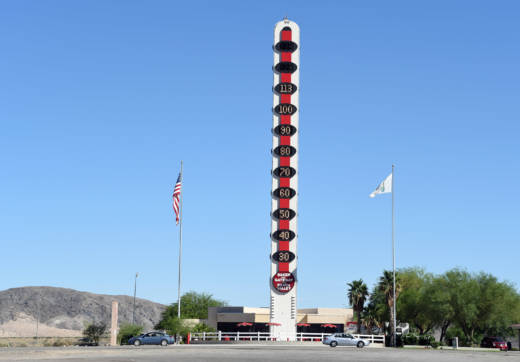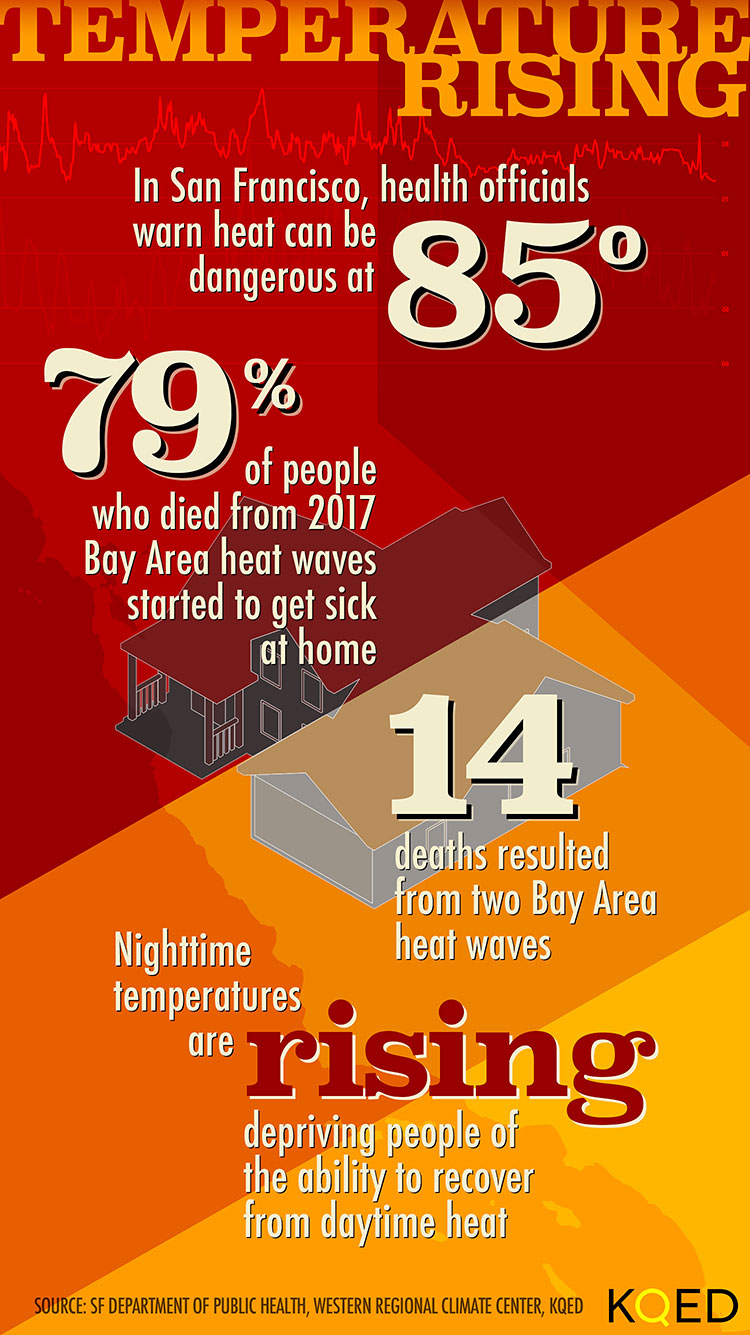Even in cool, coastal California, extreme heat sickens and kills people. In 2017, extreme heat killed 14 people in the Bay Area. Over Labor Day weekend, six alone died in San Francisco. The heat also sent hundreds more to the hospital.
In July, August, and September this summer, we measured heat in 31 homes, in four counties, across the state. We found that in every home, it was hotter inside than outside—even after the sun went down—depriving people of the ability to cool off at night. Within two decades, scientists predict extremely hot days in the Bay Area three to four times more often than in recent years.
Heat waves don’t have to end in death; heat illness is preventable. But no rules require doctors to track it. Nothing in landlord-tenant law establishes a broad right to cooling. No laws set standards for local responses when temperatures spike, even though climate change means warmer nights and more intense heat waves.
Climate-driven heat isn’t simply sending more people to hospitals. It’s changing our relationships to the built environment, through big decisions and little ones. And as systems evolve, Californians are mostly on their own as they try to cope with a familiar, but growing, danger.
1. Even 85 degrees can be dangerous for Bay Area residents.
People who live in cooler climates can get heat sick at lower temperatures, partly because they can’t adjust quickly. And nighttime temperatures are rising, depriving people of the ability to cool down.
2. ‘It takes almost two weeks for your body to acclimate to the heat.’
Naveena Bobba is the deputy director of public health for San Francisco. She says because heat waves tend to come and go in a matter of days in the Bay Area—far too quickly for the body to acclimatize—that means heat continues to build up in the body day after day.
3. Cities and counties aren’t sure of the best actions to protect people.
“Right now, unfortunately, we don’t know” whether cooling centers, text alerts or targeted messaging works, says Arizona State University climatologist David Hondula. “We have hunches about what works, and those hunches are probably not totally wrong, but it would be really nice to validate those hunches with some some data.”
4. Heat illness itself is underdiagnosed, undertreated, and undertracked.
Symptoms get missed: at home, people may not associate symptoms with heat exhaustion; in emergency rooms, doctors unfamiliar with heat stroke may take time to diagnose it. Beyond that, asthma, lung trouble and heart disease worsen, and complications from diabetes and obesity are more frequent when temperatures rise.
5. Heat illness and death are preventable.
Even undercounted, heat kills more people each year than any other disaster. But unlike earthquakes or fast-moving fires, heat can be forecasted by weather experts. Public health officials can issue warnings, and communities can set up ways to check on vulnerable people and cool them down. Cities and counties can promote cool rooftops through ordinances, plant more trees, and work with building owners to seek retrofit funding for double-paned windows or insulation.
6. Despite an abundance of solutions, Californians are on their own.
Many of the ideas that could help reduce the health risk for Californians are not close to the top of the agenda for policymakers. Many Bay Area counties haven’t updated their emergency plans to account for the warming from climate change. Finally, health departments have little funding to address heat.

